Related Research Articles

A carpet is a textile floor covering typically consisting of an upper layer of pile attached to a backing. The pile was traditionally made from wool, but since the 20th century synthetic fibers such as polypropylene, nylon, or polyester have often been used, as these fibers are less expensive than wool. The pile usually consists of twisted tufts that are typically heat-treated to maintain their structure. The term carpet is often used in a similar context to the term rug, but rugs are typically considered to be smaller than a room and not attached to the floor.
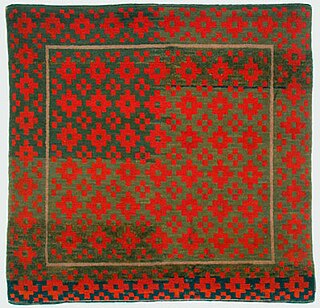
Tibetan rug making is an ancient, traditional craft. Tibetan rugs are traditionally made from Tibetan highland sheep's wool, called changpel. Tibetans use rugs for many purposes ranging from flooring to wall hanging to horse saddles, though the most common use is as a seating carpet. A typical sleeping carpet measuring around 3 ft × 5 ft is called a khaden.

A Persian carpet or Persian rug, also known as Iranian carpet, is a heavy textile made for a wide variety of utilitarian and symbolic purposes and produced in Iran, for home use, local sale, and export. Carpet weaving is an essential part of Persian culture and Iranian art. Within the group of Oriental rugs produced by the countries of the "rug belt", the Persian carpet stands out by the variety and elaborateness of its manifold designs.

A kilim is a flat tapestry-woven carpet or rug traditionally produced in countries of the former Persian Empire, including Iran, but also in the Balkans and the Turkic countries. Kilims can be purely decorative or can function as prayer rugs. Modern kilims are popular floor coverings in Western households.
An oriental rug is a heavy textile made for a wide variety of utilitarian and symbolic purposes and produced in "Oriental countries" for home use, local sale, and export.

Anatolian rug or Turkish carpet is a term of convenience, commonly used today to denote rugs and carpets woven in Anatolia and its adjacent regions. Geographically, its area of production can be compared to the territories which were historically dominated by the Ottoman Empire. It denotes a knotted, pile-woven floor or wall covering which is produced for home use, local sale, and export, and religious purpose. Together with the flat-woven kilim, Anatolian rugs represent an essential part of the regional culture, which is officially understood as the Culture of Turkey today, and derives from the ethnic, religious and cultural pluralism of one of the most ancient centres of human civilisation.
The manufacture of textiles is one of the oldest of human technologies. To make textiles, the first requirement is a source of fiber from which a yarn can be made, primarily by spinning. The yarn is processed by knitting or weaving, which turns it into cloth. The machine used for weaving is the loom. For decoration, the process of colouring yarn or the finished material is dyeing. For more information of the various steps, see textile manufacturing.

Ardabil rugs originate from Ardabil located in the province of Ardabil Province in northwestern Iran, 639 kilometers from Tehran. Ardabil has a long and illustrious history of Persian carpet weaving.

Azerbaijani carpet is a traditional carpet (rug) made in Azerbaijan. The Azerbaijani carpet is a handmade textile of various sizes, with a dense texture and a pile or pile-less surface, whose patterns are characteristic of Azerbaijan's many carpet-making regions. Traditionally, the carpets were used in Azerbaijan to cover floors, decorate interior walls, sofas, chairs, beds and tables.
Azerbaijani art is the art created by Azerbaijanis. They have created rich and distinctive art, a major part of which is applied art items. This form of art rooted in antiquity, is represented by a wide range of handicrafts, such as chasing (metalworking), jewellery-making, engraving, carving wood, stone and bone, carpet-making, lacing, pattern weaving and printing, and knitting and embroidery. Each of these decorative arts is evidence of the culture and the abilities of the Azerbaijan nation, and are very popular there. Many interesting facts pertaining to the development of arts and crafts in Azerbaijan were reported by merchants, travellers and diplomats who visited these places at different times.
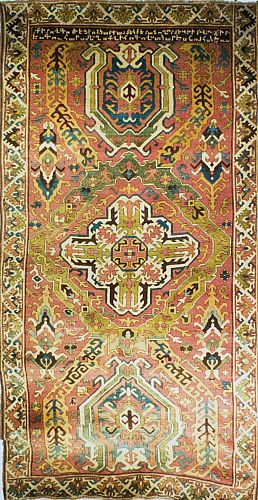
The term Armenian carpet designates, but is not limited to, tufted rugs or knotted carpets woven in Armenia or by Armenians from pre-Christian times to the present. It also includes a number of flat woven textiles. The term covers a large variety of types and sub-varieties. Due to their intrinsic fragility, almost nothing survives—neither carpets nor fragments—from antiquity until the late medieval period.

Gasimushaghi carpets are Azerbaijani pile carpets of the Karabakh school of the Jabrayil group.

"Shabalyt buta" - Azerbaijani pile carpets part of the Karabakh group of the Karabakh type. The "Shabalyt buta" carpets belong to the complex composition of the Karabakh carpets. The main centres of production of the "Shabalyt buta" carpets were Jabrayil, Aghdam and Mugan. In an earlier period, carpets of the same pattern were woven at carpet weaving points located in the Iranian Azerbaijan, but they were rougher than the Karabakh ones. The silk carpets “Shabalyt buta” woven in Jabrayil were very popular.
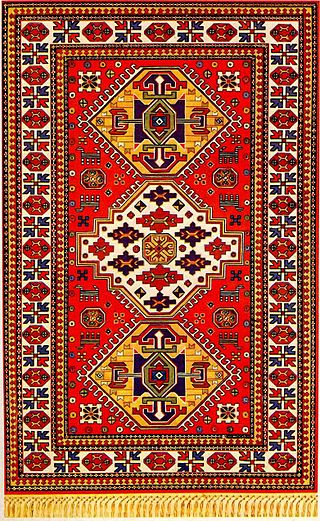
Borchaly describes a sub-category within the Gazakh group of Azerbaijani carpets, even though the region from which they originate is now within Georgia. The name of this carpet is associated with the name of the Borchaly region, located to in southeastern Georgia close to the border of Gazakh district, Azerbaijan. Large villages of this region including Gurdlar, Akhurly, Kachagan, Sadakhly (Sashikhly), Dashtepe and Lembeli were once famous for carpet weaving, though in recent decades the art of carpet weaving has almost entirely died out, leaving only two known villages where Borchaly style carpets are still woven: Kosalar and Mughanlo. The population of Borchaly including the above-mentioned villages consists mainly of ethnic Azerbaijanis.
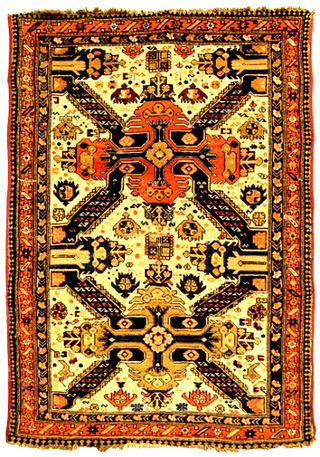
Gollu-chichi or Gollu carpets — Azerbaijani carpets belonging to the Guba school of carpet weaving.
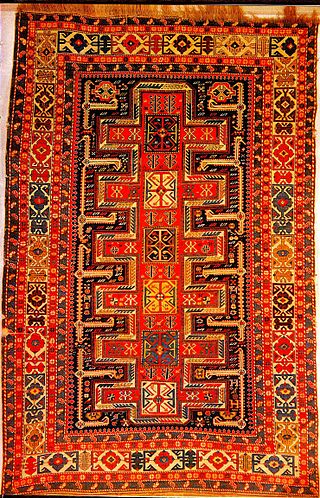
Gadim Minare carpets — Azerbaijani carpets belonging to the Guba carpet-weaving school.
Chukhanlu carpets - are a type of carpet with a rich and ancient history belonging to the Shirvan group of Azerbaijan's Guba-Shirvan carpet weaving center.

Azerbaijani nomadic life- refers to the historical and contemporary practice of individuals or groups living a nomadic (tərəkəmə) or semi-nomadic (elat) lifestyle within the cultural environment of Azerbaijan, along with its historical, cultural, and customary aspects. Temporary dwellings used by nomads in Azerbaijan include various types such as "oba, shenlik, sığırxana, yataq, binə, yurd, düşərgə, qışlaq, dəkkə, dəngə, yaylaq, etc". During the summer season, nomadic homes such as "alaçıq, coma, dəyə, muxuru, qarakeçə, dünnüklü ev, kolux, mağardəyə, etc.," are used.

Garagoyunlu — Azerbaijani carpets belonging to the Ganja-Gazakh and Karabakh carpet weaving centres. The name of the carpets is related to the names of the Garagoyunlu tribes living on the territory of Azerbaijan.
The Garachop carpets, pile-woven carpets of the Gazakh group of the Ganja-Gazakh type.
References
- ↑ Azərbaycan etnoqrafiyası. Üç cilddə, I cild. Bakı (in Azerbaijani). “CBS-PP” MMC. 2014.
- ↑ Azərbaycan xalçaları. II cild, 81 s., No5. Bakı (in Azerbaijani). “Azər-İlmə” MMC. 2012.
- ↑ Azərbaycan xalçası məişətdə. 83 s., Bakı (in Azerbaijani). 2006.
- ↑ "Azerbaijani folk art". Azərbaycan Respublikası Mədəniyyət Nazirliyi. Retrieved 2023-03-14.